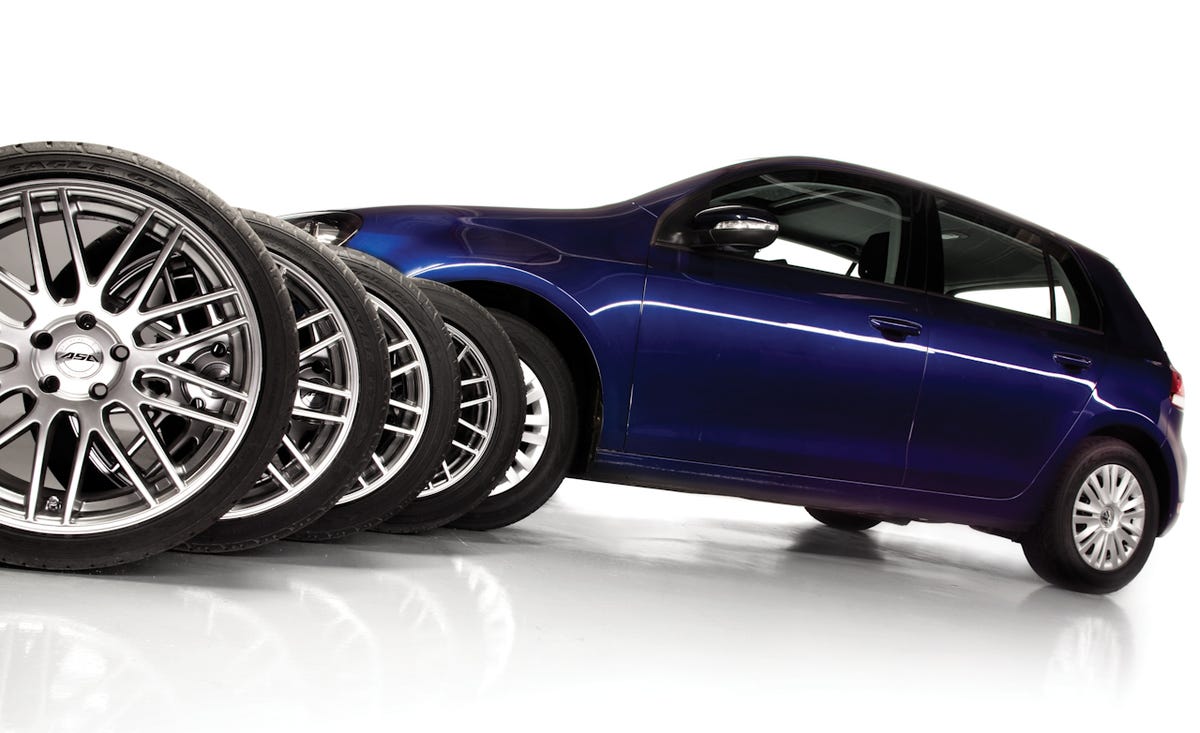
Effects of Upsized Wheels and Tires Tested
Plus-Size Models: Testing the performance effects of upsizing wheels and tires.
From 4/9/10 , doubt much has changed .

Only the lack of smaller wheel and tire combos has changed.From 4/9/10 , doubt much has changed .
If your car is beating you to death: You don't care about looks!Only the lack of smaller wheel and tire combos has changed.
If you want the smaller combo, you'll have to sacrifice looks as you'll more than likely end up with winter tires on black steel wheels.
That’s how my truck is. I don’t feel quite as bad hitting a pothole with them lolMy favorite tires are 70 series. Rim size is 1/4" larger than brake calipers. The rest is just a fad, Like fins in the late 50s
Kind of arbitrary, I mean they are stating negatives but these are the same things that people CHOOSE, when they buy a sports car or more off-road oriented vehicle.
Plus what do they mean by "inflated to manufacturer-recommended pressures"? The manufacturer of the tire probably does not spec pressure for each/every particular vehicle it might be possible to fit them on, nor does the vehicle manufacturer spec pressures for tire sizes they don't put on their vehicles, nor is it usually the case that a tire with a greater volume, would have the same, optimal tire pressure as a smaller one.
They make mention of losing a mere 0.01G on a skidpad, but how about something more important to people who don't drive like public roads are a rack track? How about Stopping Distance? I can't even fathom someone deciding to undertake this article/testing without doing stopping distance tests. Then there's snow/ice/wet traction and wear.
Plus they tried to imply they will completely ignore different diameter (as much as possible) because they insist that keeping gearing and speedometer the same is "crucial", while small differences may not be, particularly on modern vehicles where shift points and speedo can be programmed for this.
They mentioned ride quality and body roll during skidpad testing but ignored that if someone is trying to optimize performance, they may not have stopped at only a wheel & tire swap, and also ignoring that vehicle manufacturers keep ride quality in mind when pairing a chosen wheel and tire, with the chosen suspension dampening and spring rate.
The article is correct in many cases but only as far as stating the obvious and leaving out a gulf of info and testing, so not really applicable to much except the exact scenario tested and variables mentioned.
Lastly, a 2010 Volkswagon Golf? They chose a vehicle that had only ~0.2% of US new vehicle sales that year? lol If this were a European publication I could see that being a more appropriate choice but in the US, not so much.
Hmm, is my browser blocking that part of the page, or is it only on that little image, which once I zoomed in, notice it has the braking info?They did stopping distance tests. the 19"and 18"stopped 60-0 in 126ft, the 17"in 128ft, the 16" in 133ft and the 15" in 130ft
My favorite tires are 70 series. Rim size is 1/4" larger than brake calipers. The rest is just a fad, Like fins in the late 50s

My '18 GTI came with 225/40R18 tires. They looked small on the car and a little stretched on the wheels. Within a month, I bought 235/40R18 and added wheel spacers and now the car rides better, the tires look square on the wheels and the tires are now flush with the wheel wells. My speedo is 1% off. The car should have come this way.
I put some 195/65R15's on the Focus for the summer for a bit of extra sidewall and a slight rpm decrease on the hwy. 195/60R15 is the normal size. I was pleasantly surprised how little I felt the taller sidewalls squirm as well.I had a couple of cars where zero-plus worked out nicely
Not every tire and wheel is exactly the same. Maybe he installed a "narrow" 235Except that a 235/40R18 tire is not rated down to a 7.5" wheel width... Which you have, assuming you didn't change the wheels.
